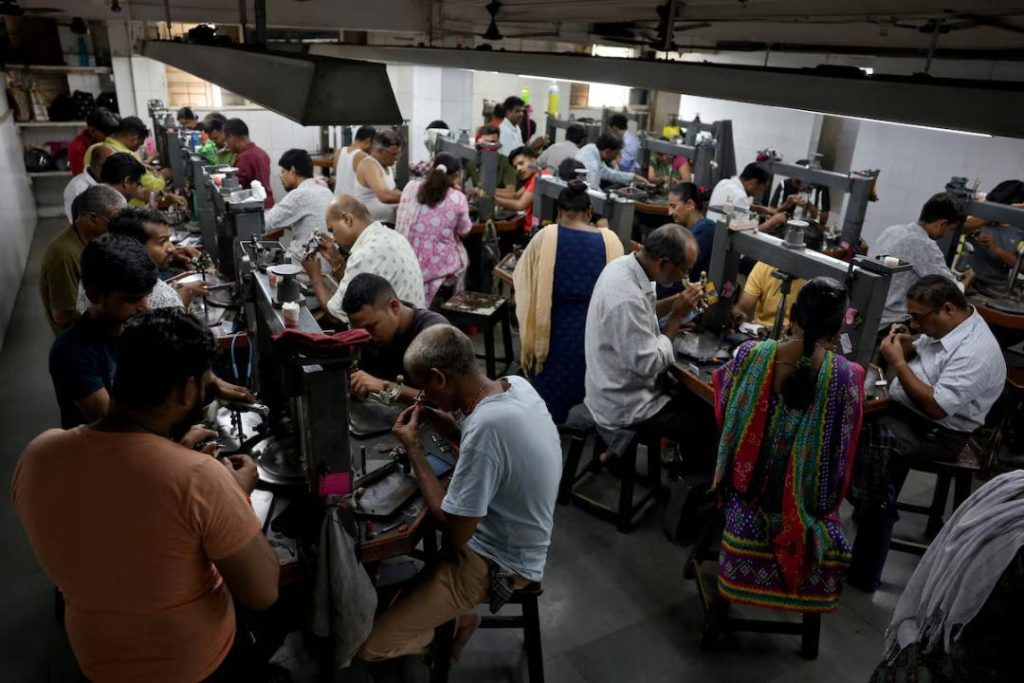
India’s Unemployment Rate Decreases to 5.2% in July
India’s unemployment rate has been on a steady decline, and the latest data from the Periodic Labour Force Survey (PLFS) has confirmed this trend. According to the PLFS’s monthly survey, India’s unemployment rate fell to 5.2% in July from 5.6% in the previous month. This is a significant drop and a welcome relief for the millions of job seekers in the country.
The data also provides a breakdown of the unemployment rate across different regions and age groups. In urban areas, the joblessness rate among youth aged 15-29 years increased to 19.0% in July from 18.8% in June. This is a concern, as it suggests that young people in urban areas are facing a tough job market. However, in rural areas, the youth jobless rate declined to 13% from 13.8% in June. This is a positive sign, indicating that rural areas are seeing an improvement in job prospects for young people.
The PLFS is a comprehensive survey that provides insights into India’s labour market. It is conducted by the National Statistical Office (NSO) and is considered one of the most reliable sources of data on employment and unemployment in the country. The survey covers a wide range of topics, including employment, unemployment, education, and training.
The decline in unemployment rate is a positive sign for the Indian economy, which has been growing steadily over the past few years. The country’s GDP growth rate has been consistently above 7% in recent years, making it one of the fastest-growing major economies in the world. However, despite this growth, the unemployment rate has remained a concern for the government and policymakers.
The government has taken several steps to address the issue of unemployment, including increasing spending on infrastructure projects, providing subsidies to small and medium-sized enterprises (SMEs), and implementing schemes to promote entrepreneurship. The government has also launched several initiatives to improve the employability of young people, such as the National Apprenticeship Scheme and the Start-Up India Scheme.
The decline in unemployment rate is also a reflection of the efforts made by the government to promote economic growth and job creation. The government’s policies, such as the Goods and Services Tax (GST) and the Insolvency and Bankruptcy Code (IBC), have helped to improve the business environment and attract foreign investment. Additionally, the government’s focus on infrastructure development, including roads, railways, and airports, has created new job opportunities in the construction and services sectors.
However, despite the decline in unemployment rate, there are still concerns about the quality of jobs being created. Many of the new jobs being created are in the informal sector, which means that they do not provide the same level of benefits and security as formal sector jobs. This is a concern, as it can lead to poverty and inequality.
Furthermore, the data also shows that the unemployment rate for women remains higher than that for men. In July, the unemployment rate for women aged 15-29 years was 22.4%, compared to 17.5% for men in the same age group. This is a concern, as it highlights the need for more gender-sensitive policies to promote women’s participation in the labour market.
In conclusion, the decline in unemployment rate to 5.2% in July is a welcome relief for the Indian economy. While there are still concerns about the quality of jobs being created and the need for more gender-sensitive policies, the data suggests that the government’s efforts to promote economic growth and job creation are bearing fruit. As the Indian economy continues to grow, it is essential that policymakers focus on creating high-quality jobs that provide benefits and security to workers.
Sources:
https://www.reuters.com/world/india/indias-unemployment-rate-eases-52-july-2025-08-18/






